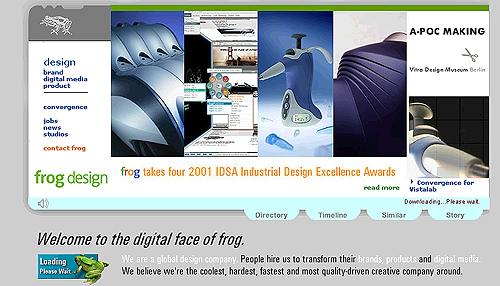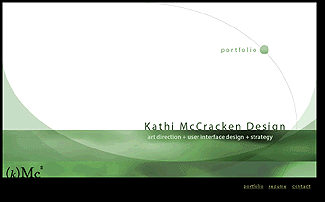|
Design-ject
Management --New Roles for the "New New Economy"
by Core-e-spondent Michael
Chanover
While it is true that design professionals have seen the roller
coaster of the economy make some big (okay, huge) swings in both
directions over the last eight years, we should rest assured that
we are amongst the many who recently have gone from asking "When
will it end?" to the more agitated question of "When will it come
back?!?". --Of the numerous professions that have been effected
by these economic swings, none has seen more diversity and color
in its evolution than that of design.
Consider that it is only the dawn of the 21st century, and we
have already seen several models of how designers work. It would
appear that in the boom economy, the designer was often surrounded
with supporting members, account managers, project managers and
the like. With wildly huge budgets going around, there was money
for several salaries. However, in harder times with tighter budgets,
many groups cannot afford these three separate salaries and subsequently
look for "two in one" or "three in one" employees with the "one"
often being the designer.
Of course, it would be naive to name the economy as the only
force acting on these changes. In addition to tighter budgets
and schedules, we are seeing a growth in sophisticated tools that
are providing deeper and broader visibility into the entire process
by designers and manager alike. Intranets and shared project files
focus on visualizing the process so that all tasks are available
to the entire project team at any given time -- a first in history.
This is a major feat given that considering that the Internet
as we know it today is less than 10 years old, and touch tone
phones are less than 25 years old!
Furthermore, a long-standing favorable trend towards "collaboration"
is trickling up from business schools to management circles of
Fortune 500 companies. This trend has become so prevalent that
there are actual software applications dedicated only to collaboration.
Frogdesign's Bizwerk and Buzsaw, once an Auodesk company, now
spun off as its own venture, are only two examples of such packages.
These tools are built, if for no other reason, than to expose
and expedite the production process by allowing deeper visibility
between all the different players.

While we do not know how this blurring of roles impacts the design
world in totality, we do know that there are already visible changes
in certain parts of it. Take the hiring and recruiting efforts
of some of the leading design studios as an example. Many would
agree that there has been a dramatic shift in the profile of a
designer over the years to reflect the needs of a hyper-communication
marketplace; in the past, designers were often judged on the basis
of their portfolios and their portfolios alone. In fact, it was
not rare for a designer's portfolio to be the only touch point
between a candidate and a studio. In some cases, offers were extended
to designers without an interview ever taking place. Even portfolio
sites, such as coroflot.com, have grown tremendously in popularity.
Nowadays, such a practice would be almost unheard of. Designers,
it would seem, are being asked to take a growing role in the management
of a design program. While there are sometimes other players,
such as a project manager or an account manager, the designer
is required to interface with these groups as well as be able
to work with clients, engineers, marketing groups, and so in addition
to producing design.
What else does this mean for design? Are design schools, for
example, putting more emphasis on rounding out their student's
skill sets beyond just doing great design? According to Nell Daniel,
Director of Admissions at Parsons School of design, the answer
is "yes". "While design skills are clearly at the center of what
we look for in our applicants, we are increasingly interested
in students who are articulate original thinkers, demonstrate
leadership skills, and seek to use design as a tool for discovery,
collaboration and change."

Other educational institutions like the Leader for Manufacturing Program at MIT and the Product Design Program at Stanford University are taking an even more holistic approach towards integrating design with other disciplines. The LFM program is a joint venture between the Sloan School of Management and the School of Engineering. The idea here, according to the LFM Web site is that "students have the opportunity to become "bi-lingual" in management and engineering sciences..." Another example is Stanford's Product Design Program. Situated between the School of Art and the School of Engineering, it is described to provide "a design education which synthesizes the technical with the aesthetic".

Yet, in light of all this 'bi-lingual synthesis' and overlapping
of roles, there still is a great deal of autonomy that shows no
evidence of going away. In fact, one could argue that this increase
in sharing of responsibilities makes the "design" part of the
designer's job all the more important. Roger Wong, formerly of
marchFIRST, explains "I used to work at a small design studio
where I did a little bit of everything. This was valuable experience
that allowed me to learn many of the tools and processes. Then,
when I went to work at marchFIRST, there were entire strategy,
account, content, user interface and production teams that worked
with the designer, which allowed the designer to be more specialized.
But that sometimes lead to isolation from the big picture. Design
can't happen in a vacuum. Now, as a freelance designer, I am working
more like a small studio, with fewer people who share more of
the work. This can be a very good thing as long as the designer
is able to lead according to his or her vision."

Interestingly, the project management camp has a similar message.
Joshua Polsky, Product Manger at eMarker LLC, a Sony Subsidiary
contends "a successful design program needs to be a marriage of
design objectives with business objectives. There is sometimes
a tendency for 'designers to want to design for design's sake'.
Designers and Product Managers must both understand what customer
problem is being solved by the product." The notion of a client
having dual representation for both the design and the business
is akin to that of real estate in which there is an agent for
the buyer and an agent for the seller. While this does have some
merit, the question still remains; what happens where there is
not enough budget for both? Pure logic would suggest that fewer
people are taking on more work.

What do designers think of all this change? Well, it depends
on the designer. Some contend that designers should not be bothered
with the "non-creative" aspects of the project such as the budget
and schedule. Others believe that the designer must not only be
aware of, but be responsible for these details, as it is part
of the total solution that is being created. "Design is not just
about pretty pictures" says Bay Area designer Kathi McCracken.
"Designers have a social, economic and moral obligation to deliver
a solution that addresses the clients' needs on all fronts, including
the business details. I mean let's face it, if a designer doesn't
understand what business context the design must thrive in, how
can the design be effective?".
It is clear that the questions raised are complex ones; "what
is the role of the designer?" and "is a large support team better
for the actual design or worse"? Whatever the case may be, this
is part of a never-ending step towards defining what "design"
is. This can, and should, be considered a ripe opportunity to
redefine our interpretation of design and what the actual role
of the design should be, regardless of the economic conditions
of today.
References:
|